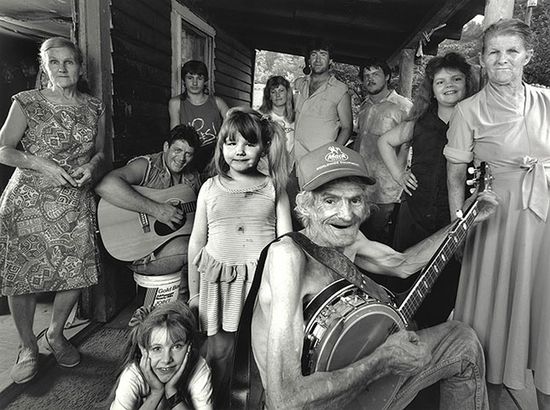Smart Growth: A Foundation Helping a "Small Town" Museum Effectively Scale
/
The museum's permanent collection includes Appalachian photographs by Shelby Lee Adams.We've written a bunch lately about how "small town" museums are giving their big city brethren a run for their money, often with the help of local patrons with deep pockets and a strong sense of civic pride.
It's inspiring stuff—a great underdog story in an era of nine-figure gifts to places like MoMA.
But often lost amongst the hoopla is the hard work involved in getting from Point A to Point C. How can smaller museums grow most effectively? How can they minimize the associated—and often times costly—growing pains? And, perhaps most importantly, how do philanthropic dollars fit into the equation?
For an answer we turn to Asheville, North Carolina, where the William Randolph Hearst Foundation awarded the Asheville Art Museum a $250,000 grant as part of the museum's Art WORKS for Asheville Capital Campaign to support expanded curatorial and collections storage, research and study facilities as part of the major renovation, and expansion project underway to create the new Asheville Art Museum, scheduled for completion in spring 2018.
In short, the grant has given some breathing room to a museum that became a victim of their own success.
Over the past 15 years the museum’s collections have nearly quadrupled in both size and significance. The museum's current collection storage facilities are over-capacity. And according to the museum, only three percent of the Permanent Collection can be on view at one time.
With the expansion project, the museum's new storage facilities, including a new collections storage area located in the Curatorial and Collections Center, will securely accommodate the museum’s current collections as well as providing space for continued growth.
And so the gift represents a mix of unglamorous utilitarian initiatives like a new Collections Resource and Study Area as well as the construction of "visually stunning" structures to create what the museum calls a "21st century architectural landmark."
At its core, the Hearst Foundation's gift marks yet another example of the grantmaker looking to improve access to the arts. Last year it awarded $200,000 to fund the Film Society of Lincoln Center's CineKids, an education initiative focused on bringing film into the classroom through screenings, discussions, and production, in order to bolster visual literacy learning in elementary schools.
Last year it also gave the Connecticut-based Aldrich Contemporary Arts Museum a $60,000 grant for continued support of its arts education programs for children and youth. The museum offers preschool programs, school visits, and after-school teen programs, as well as school break workshops and a summer day camp.
Commenting on the gift, Asheville Art Museum Executive Director Pamela Myers said, "The museum thanks the William Randolph Hearst Foundation for their longstanding commitment to collections and education and for their recognition of the excellence of the Asheville Art Museum’s programming, exhibitions, and collections and its impact now and in the future."








